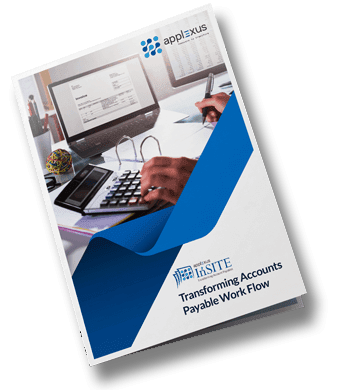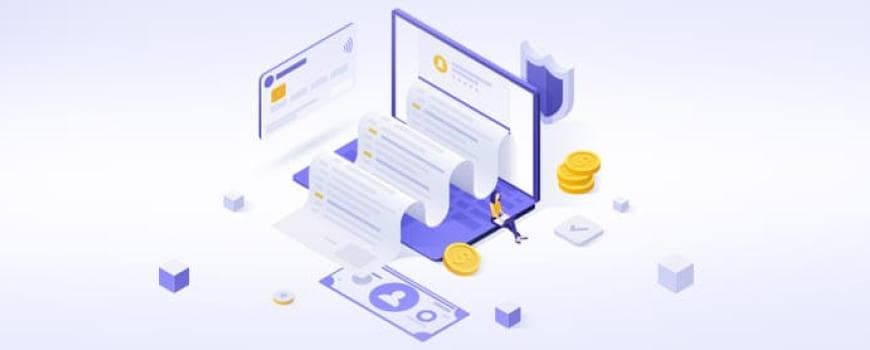How to Overcome the Challenges in Accounts Payable Automation
12 May 2021


Shubham Agrawal
Product ManagerShubham Agrawal is a product manager at Applexus. He loves solving problems at the intersection of business, design & technology. With domain knowledge across retail, e-commerce...
Maintaining a healthy cash flow and positive vendor relationships is like walking on a tightrope. A robust, optimized, and automated accounts payable process is one way to achieve that goal. But replacing and/or upgrading a manually-intensive accounts payable system with an automated solution is not as easy as it sounds.
As AP processing is largely characterized by large volumes of data inflow from multiple sources in different formats, an automation solution results in more secure invoice collection, prompt and precise data entry, timely payment processing, and archival. Further, automation drives, efficient exception handling, approvals, and settlements without additional human intervention.
Although AP automation bridles the financial settlement activities and entangled process flows from a central hub to harness the benefits, there are many challenges to address in preparation for AP automation.

Help Your Finance Team Perform the Best Whether they Work from Home or Office
Organizational Challenges: Adoption & Implementation
To keep up with today’s highly competitive market landscape, enterprises can't afford to delay any business activities, especially liability management. Companies today are desperately searching for sophisticated solutions that gracefully handle invoice settlement to improve service levels, and cash management.
Focusing on efficiency and productivity around expenditures, businesses are increasingly looking to automated accounts payable solutions to deliver quantitative benefits. But, in preparation for implementation, businesses should understand the goals they need to achieve with the adoption of an automated AP system.
First, they should have a clear vision about the goals, resource capacity, and user acceptance to start addressing challenges of the transformation. With this in mind, businesses can develop a process map that connects the critical dots in the process including the stakeholders, their roles, technologies used, the steps, cost and time, and the key metrics in the workflow.
Having the process map in hand, finance managers should review and understand the process shifts about to occur and validate these against internal controls and regulatory policies for liability settlement. They should map out the invoice approval workflow, the internal delegation of duties, and reporting points to determine how an AP automation system will simplify the invoice payment process.
Plus, to maximize the benefits of AP automation, businesses should understand how to leverage the data and how to embed other lines of business and levels to gain operational advantage.

Policy Challenges: Business-appropriate AP Best Practice
Businesses with different financial management approaches have different AP best practices. The approach that enables them to get the most benefit from their AP system is their best practice. It involves many key components such as corporate AP policies, business size, regulatory rules, vendor management policies, infrastructure capacity, budget, security and compliance, approval levels, and working capital strategy.
Companies with a global presence may have location-appropriate AP policies. Based on regional financial payment closing models, these policies have to be tailored to maximize ROI. Moreover, companies should update AP policies with a margin that permits the AP system to pay invoices below that amount. Also, for automating recurring payments, financial managers should formulate a process flow that ensures a faster, yet flawless, payment approval route.
Looking into supplier relationship management, businesses should ensure the preferred AP system allows vendors to submit invoices in multiple formats and through multiple channels. To include other departments such as procurement, sales, and corporate accounting, finance managers should maintain a well-defined collaboration procedure aligned with financial policies and compliance.
With policy compliance requirements in mind, companies should have a thorough understanding of their business-appropriate AP best practice. As business complexity increases, policy constraints also become complex and demand a comprehensive automated AP solution to address all the policy challenges.
Technology Challenges: Product and Purpose
There are hundreds of automated AP solutions available on the market built for different use cases and capabilities. The solutions primarily come under five major categories such as AP enabling solutions, component solutions, hybrid (enabling + component) solutions, purpose-built solutions, and extensible solutions. All these versions have unique purposes with different capabilities. Landing on the wrong solution would be a strategic mistake for companies as it may not be able to effectively meet their requirements.

AP enabling solutions offer horizontal capabilities for businesses to build workflow tools, software and also to serve as a development environment or financial system enabling platform.
Component solutions are custom-built software stacks designed to solve a specific challenge in the AP automation cycle such as data capture, analytics, invoice conversion, validation, etc.
Hybrid solutions are a mix of enabling and component solutions and are used to address multiple challenges across the organization, resulting in an end-to-end solution supporting a specific problem for organization that integrates with a specific ERP.
Purpose-built solutions single-handedly tackle the end-to-end AP activities with feature-rich functionality. This type of solution is designed to takeover enterprise-level AP automation tasks with unique configuration and functionality. It can serve the purpose based on pre-set functionality and function-appropriate workflows along with a company’s ERP solution.
The most advanced among the five offerings is the extensible AP solution. These solutions are versatile and futuristic that can seamlessly integrate into multiple ERPs such as SAP, and are easily configurable for diversified business models with minimal complexity. Extensible systems can scale along with the dynamics of business operations and deliver the same benefits across the entire AP process.
Choosing the best solution based on the business goals, cost constraints, and purpose helps to harness the benefits of the system. As today’s business landscape is more dynamic than ever, integrating disparate technologies increases the risk and associated costs.. However, based on the scale of business, a comprehensive as well as advanced AP system is preferred. Though the cost and support involved in it are high, the result it delivers is worth it.
How to Overcome the Challenges
In any financial management operation, process automation solutions that can adapt to changing business behavior are the most favored. An extensible AP solution is the ideal one for any business’s automated invoice payment process. As the dimensions of business change, extensible solutions can scale and upgrade to support new enterprise systems while delivering the same service quality.
As we are assumed that extensible AP automation systems are the best solutions to integrate, we have to examine which is the best extensible automated AP solution on the market and who is the best implementation partner.

Analyzing the critical parameters that add value to enterprise accounts payable processing such as intuitive functionality, extensibility, configurability, expertise, and performance, Applexus InSITE is the best AP automation software available on the market today. Applexus InSITE is delivered with a wealth of features including AI-powered data capture through Applexus’ proprietary intelligent data extraction and recognition technology, self-learning capability, pre-set functionalities, and guided configuration to shorten the implementation process as well as enable organizations to realize ROI faster than any other AP solution available.
Designed to be fully integrated with SAP, Applexus InSITE offers an SAP process flow user experience based on AP best practices including multi-channel invoice capture, seamless AP workflows, tight ERP integration, analytics, fraud & duplicate detection, invoice matching, multi-level approvals, better process visibility, and improved cash management.
Bottom Line:
To harness maximum process efficiency from an AP system, organizations should work with the best solution and the best implementation partner. The technical infrastructure and readiness to accept new technology play critical roles to achieve the best from the solution. As an extensible AP solution, InSITE is the brainchild of Applexus technologies which has extensive expertise in SAP software, consulting services, and product implementations. Hence, Applexus has designed InSITE to provide all the best features to streamline and fast-track the AP workflow, reduce costs, improve transparency, strengthen cash flow controls and enhance vendor relationships.












